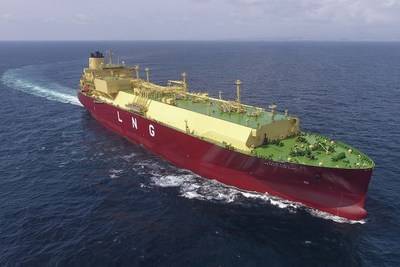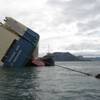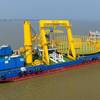LNG Carrier Sails from US to South Korea Using Autonomous Navigation
A 180,000-square-meter-capacity liquefied natural gas (LNG) carrier is said to be the world's first large cargo ship to cross the Pacific using autonomous navigation.
Built by Hyundai Heavy Industries in 2021 and delivered to SK Shipping in South Korea, the vessel Prism Courage is equipped with HiNAS 2.0, Level 2 autonomous navigation solution developed by Avikus, a subsidiary of HD Hyundai (former Hyundai Heavy Industries Group).
According to Avikus, HiNAS 2.0 creates optimal routes and speeds based on Hyundai Global Service's Integrated Smartship Solution. Its artificial intelligence recognizes the surrounding environment—weather and wave heights—and nearby ships, and then controls the vessel's steering commands in real-time. The Level 2 technology can control and operate the ship in addition to the functions of recognition and judgment.
The Prism Courage departed from Freeport, Texas on the southern coast of the Gulf of Mexico on May 1, passed through the Panama Canal and arrived at the Boryeong LNG Terminal in South Chungcheong Province in Korea after 33 days.
In this test crossing, the Prism Courage was operated autonomously on the optimal routes, increasing the fuel efficiency by around 7% while reducing greenhouse gas emissions by about 5%, Avikus said. The system also accurately recognized the locations of nearby ships to avoid collision about 100 times.
This voyage was conducted under real-time monitoring of the American Bureau of Shipping (ABS) and the Korea Register of Shipping to verify the performance and stability of the technology. Avikus plans to commercialize HiNAS 2.0 within this year after receiving a certification from ABS for the results of this self-propelled ocean crossing.
Autonomous navigation technology is drawing attention for future maritime mobility as a means to solve workforce shortages in the maritime transportation industry, reduce pollutants and improve safety by shrinking the potential for human error.
Avikus CEO Do-hyeong Lim said, "We will lead innovation by upgrading autonomous navigation solutions not only for large merchant ships but also for small leisure boats."















